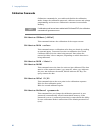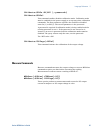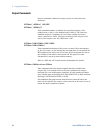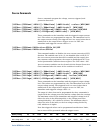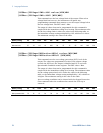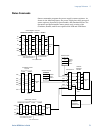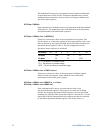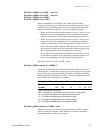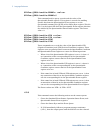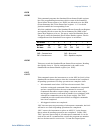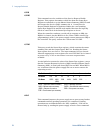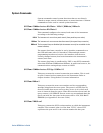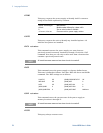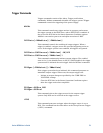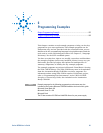5 Language Reference
74 Series N5700 User’s Guide
STATus:QUEStionable:ENABle <value>
STATus:QUEStionable:ENABle?
This command and its query set and read the value of the
Questionable Enable register. This register is a mask for enabling
specific bits from the Questionable Event register to set the
questionable summary bit (QUES) of the Status Byte register. This bit
(bit 3) is the logical OR of all the Questionable Event register bits that
are enabled by the Questionable Status Enable register. The Preset
value = 0.
STATus:QUEStionable:NTR <value>
STATus:QUEStionable:PTR <value>
STATus:QUEStionable:NTR?
STATus:QUEStionable:PTR?
These commands set or read the value of the Questionable NTR
(Negative-Transition) and PTR (Positive-Transition) registers. These
registers serve as polarity filters between the Questionable Condition
and Questionable Event registers to cause the following actions:
When a bit of the Questionable NTR register is set to 1, then a 1-
to-0 transition of the corresponding bit of the Questionable
Condition register causes that bit in the Questionable Event
register to be set.
When a bit of the Questionable PTR register is set to 1, then a 0-
to-1 transition of the corresponding bit in the Questionable
Condition register causes that bit in the Questionable Event
register to be set.
If the same bits in both NTR and PTR registers are set to 1, then
any transition of that bit at the Questionable Condition register
sets the corresponding bit in the Questionable Event register.
If the same bits in both NTR and PTR registers are set to 0, then
no transition of that bit at the Questionable Condition register
can set the corresponding bit in the Questionable Event register.
The Preset values are: NTR = 0; PTR = 32767
*CLS
This command causes the following actions on the status system:
Clears the Standard Event Status, Operation Status Event, and
Questionable Status Event registers
Clears the Status Byte and the Error Queue
If *CLS immediately follows a program message terminator
(<NL>), then the output queue and the MAV bit are also cleared.



